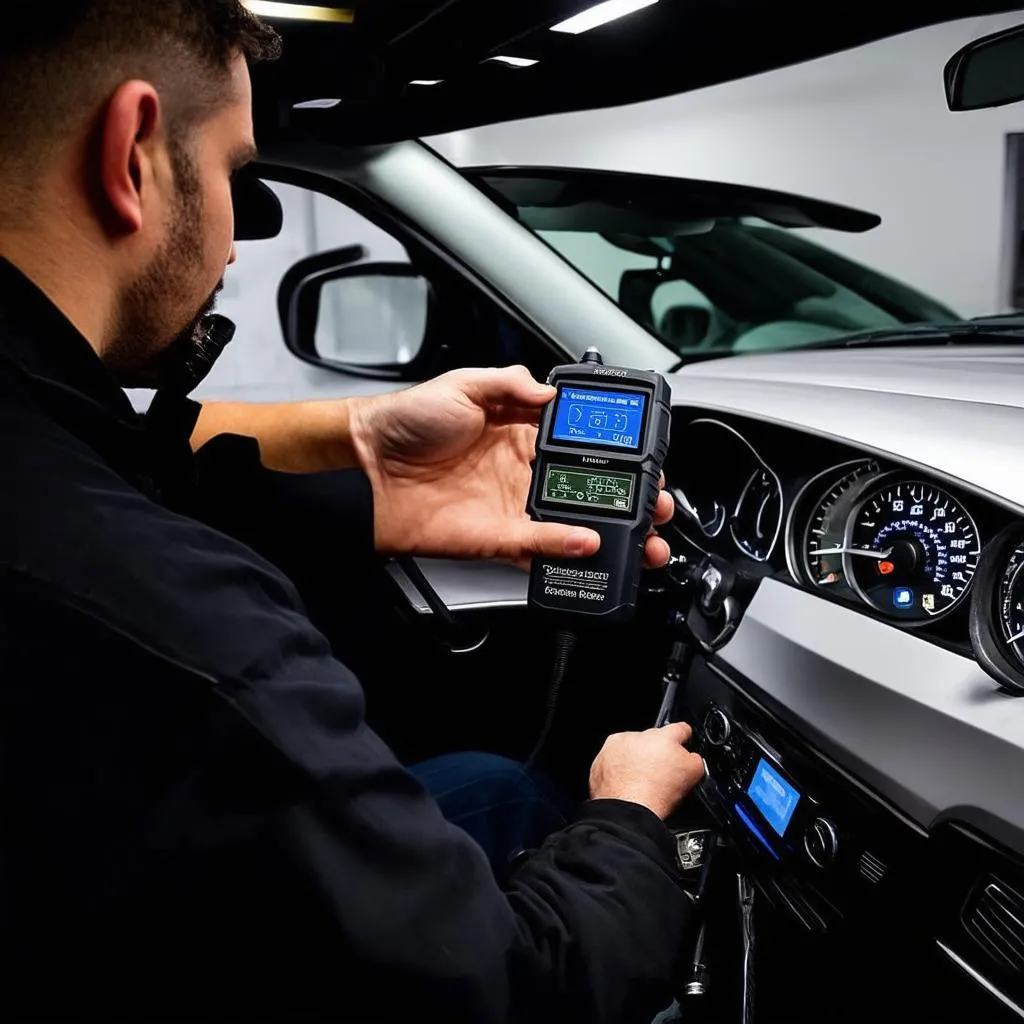Experiencing “limp mode” in your Mercedes Benz can be a frustrating and concerning experience. This safety feature, designed to prevent catastrophic engine damage, significantly reduces your car’s performance, leaving you stranded with limited speed and acceleration. But don’t panic! This comprehensive guide will walk you through identifying the causes of Mercedes limp mode and provide a step-by-step approach to help you get back on the road safely.
Understanding Mercedes Limp Mode: What’s Going On?
Essentially, limp mode is your Mercedes’ way of saying, “Hey, something’s not right here!” When your car’s computer detects a problem that could lead to severe engine damage, it activates limp mode to protect vital components. This means your car will operate at a reduced performance level until the underlying issue is addressed.
Common Causes of Limp Mode in Mercedes Benz Vehicles:
Before we dive into fixing the problem, it’s crucial to pinpoint the root cause. Here are some of the most common culprits behind Mercedes limp mode:
- Transmission Problems: Issues with the transmission, such as low fluid levels, faulty solenoids, or a failing valve body, can trigger limp mode.
- Engine Sensor Malfunctions: Malfunctioning sensors, such as the mass airflow sensor, throttle position sensor, or crankshaft position sensor, can disrupt engine management and lead to limp mode.
- Turbocharger Issues: Overboosting or underboosting due to turbocharger problems can cause your Mercedes to enter limp mode to prevent engine damage.
- Fuel System Problems: Clogged fuel filters, failing fuel pumps, or issues with the fuel injectors can disrupt the fuel-air mixture, triggering limp mode.
- Electronic Control Unit (ECU) Faults: Though less common, a malfunctioning ECU, the car’s brain, can also trigger limp mode.
Identifying the Problem: Signs and Symptoms
Recognizing the signs of limp mode is the first step to resolving the issue. Look out for these telltale signs:
- Check Engine Light: The illumination of the check engine light on your dashboard is a primary indicator.
- Limited Engine Speed: You’ll notice a significant reduction in engine RPM, usually capped at a low level.
- Gearbox Malfunction: The transmission may get stuck in a single gear, commonly third or fourth gear.
- Loss of Power: Expect a noticeable decrease in engine power and acceleration.
How to Fix Limp Mode: A Step-by-Step Guide
Important Note: While these steps provide a general guideline, the specific repair procedures may vary depending on the year and model of your Mercedes Benz.
Step 1: Read the Diagnostic Trouble Codes (DTCs)
The most crucial step is identifying the specific fault codes triggering limp mode. This requires an OBD-II scanner, a valuable tool for any DIY mechanic. Connect the scanner to your car’s OBD-II port (usually located under the dashboard, driver’s side), and retrieve the stored DTCs.
 OBD2 Scanner plugged into a Mercedes Benz
OBD2 Scanner plugged into a Mercedes Benz
Step 2: Research the Fault Codes
Once you have the codes, jot them down and research their meaning. Numerous online resources and forums dedicated to Mercedes Benz can provide detailed information about specific DTCs and potential solutions.
Step 3: Address the Underlying Problem
Based on the fault codes and your research, you can now focus on fixing the underlying issue. This might involve:
- Replacing Faulty Sensors: If you’ve identified a malfunctioning sensor, replacing it is usually a straightforward process.
- Checking Fluid Levels and Addressing Leaks: Inspect transmission fluid, engine oil, and coolant levels. Address any leaks promptly.
- Inspecting the Turbocharger: Check for leaks or damage to the turbocharger and associated components. Repair or replace as needed.
- Addressing Fuel System Issues: Replace clogged fuel filters, check for fuel pump operation, and inspect injectors for proper functionality.
Step 4: Clear the Fault Codes
After addressing the root cause, use the OBD-II scanner to clear the stored fault codes.
Step 5: Test Drive Your Mercedes
Take your Mercedes for a test drive to ensure the issue is resolved. Monitor engine performance and watch for any warning lights.
When to Seek Professional Help
While some limp mode causes can be addressed with basic DIY skills, others require specialized knowledge and tools. If you’re uncomfortable diagnosing and repairing complex automotive systems, seeking professional help from a qualified Mercedes mechanic is always the safest bet.
 Mercedes Benz mechanic inspecting a car in a repair shop
Mercedes Benz mechanic inspecting a car in a repair shop
Cardiagtech: Your Partner in Mercedes Diagnostics
For those who prefer a DIY approach, CARDIAGTECH offers a range of diagnostic tools and resources to help you understand and resolve your Mercedes limp mode issue. Check out their website for more information on Mercedes diagnostic software and other helpful resources.
Frequently Asked Questions about Mercedes Limp Mode
Q: Can I drive my Mercedes in limp mode?
A: While you can technically drive short distances in limp mode to get to a safe location, it’s not recommended for extended periods. Driving in this mode can potentially worsen the underlying problem and cause further damage.
Q: How much does it cost to fix Mercedes limp mode?
A: The cost of repair can vary greatly depending on the root cause. Simple sensor replacements might be relatively inexpensive, while transmission or turbocharger repairs can be significantly more costly. To get a better understanding of potential repair costs, you can check out this article on how much it costs to fix a Mercedes.
Q: Can a low battery cause limp mode in a Mercedes?
A: While a low battery itself might not directly trigger limp mode, it can lead to erratic electrical behavior and sensor malfunctions, which in turn can activate limp mode.
Q: Is Mercedes limp mode the same as transmission limp mode?
A: While transmission problems are a common cause of limp mode, the term “limp mode” itself encompasses a broader range of potential issues that can trigger this safety feature.
Conclusion
Experiencing limp mode in your Mercedes Benz can be a stressful experience, but understanding its causes and following a systematic approach to diagnosis and repair can help get you back on the road safely. Remember, while some issues are DIY-friendly, seeking professional help is always a good idea for complex problems. Safe driving!


